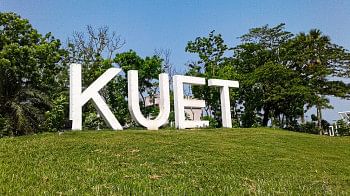Fitch warns of currency risks to exports
Bangladesh's exports gained momentum in most of 2016, but a stronger taka against a basket of other currencies may hurt shipments this year, according to global credit rating agency Fitch.
“In 2017, this sector may feel the pinch of further real effective exchange rate appreciation, although Bangladeshi labour costs are still relatively low,” the New York-based company said yesterday.
An increase in 'real effective exchange rate appreciation' or REER implies that exports become more expensive and imports become cheaper; an increase indicates a loss in trade competitiveness.
Fitch said Bangladeshi apparel exports continued to be strong, accounting for 81 percent of total exports and earning the country $26.1 billion in the first 11 months of last year, which was $24.6 billion in 2015.
Political and safety risks remain substantial in Bangladesh, Fitch said.
“Security incidents or political turmoil could inflict long-term economic harm if it deters foreign investors and buyers of Bangladeshi goods, especially readymade garments, from doing business in Bangladesh.”
Calm has returned after political violence that erupted in 2014 and 2015, but continued strong political polarisation could again lead to widespread violence and blockades, especially nearer to parliamentary elections, which are to be held no later than January 2019.
Bangladesh's external finances are supported by a comfortable, gradually rising foreign-exchange reserve, amounting to $32.1 billion in December 2016.
Remittances have started to decline in mid-2016, especially inflows from the Middle East, leading to an 11 percent drop in 2016 to $13.6 billion. Fitch has maintained its 'BB-' rating for Bangladesh, due to its foreign currency earnings and high and stable real economic growth.
“Bangladesh's ratings balance strong foreign-currency earnings and high and stable real GDP growth against weak structural indicators, significant political risk and weak banking-sector health,” it said.
It said the country's real GDP growth is high at a five-year average of 6.5 percent compared with the 'BB' category median of 3.5 percent.
“Growth has been remarkably stable over the years despite both political turmoil and natural disasters.”
In FY16, economic growth was 7.1 percent supported by increased purchasing power from public-sector wage hikes and monetary policy loosening.
Fitch however expects the GDP growth to decline to 6.6 percent this fiscal year and 6.4 percent in FY18, in part due to lower consumer spending resulting from falling remittances. Inflation is relatively high compared with peers, averaging 5.4 percent in the first half of this fiscal year, but below the authorities' target of 5.8 percent set for FY17.
It said the risk that Bangladesh will need to provide considerable additional support to the banking sector is substantial, although the small size of private credit, at just 36.5 percent of GDP, would moderate the impact.
The sector's health and governance standards are generally weak, particularly in public-sector banks. The official non-performing loan ratio was high at 10.3 percent in the third quarter of 2016, while the capital adequacy ratio was low at 10.3 percent, down from 10.6 percent in the first quarter. The capital adequacy ratio for the six state-owned commercial banks was just 5.6 percent.
Bangladesh's general government debt was 32.4 percent of GDP last fiscal year, which compares well with the 'BB' median of 51.4 percent.
However, the government's revenue intake of 9.9 percent of GDP is the second-lowest of all sovereigns rated by Fitch after Nigeria, implying limited fiscal space to boost badly needed infrastructure development.
Implementation of the new VAT has been postponed to July 2017. The new VAT has the potential to significantly boost revenues, but the impact will depend on the details, such as the final tax rate and whether the rate will be uniform for all products.
Bangladesh scores poorly on a broad range of structural indicators, such as the World Bank's governance indicator (22nd percentile versus the 'BB' median of 50th percentile).
GDP per capita of $1,443 is well below the 'BB' peer category median of $5,325, although major improvements have taken place over the past decade on a number of social metrics.
“The difficult business environment is illustrated by the country's position of 176th out of 190 countries in the World Bank's Ease of Doing Business report, while a large infrastructure deficit also hampers investment,” Fitch said.
However, it said, the government seems focused on making progress on some big ongoing infrastructure projects, including the Padma Multipurpose Bridge.

 For all latest news, follow The Daily Star's Google News channel.
For all latest news, follow The Daily Star's Google News channel. 



Comments